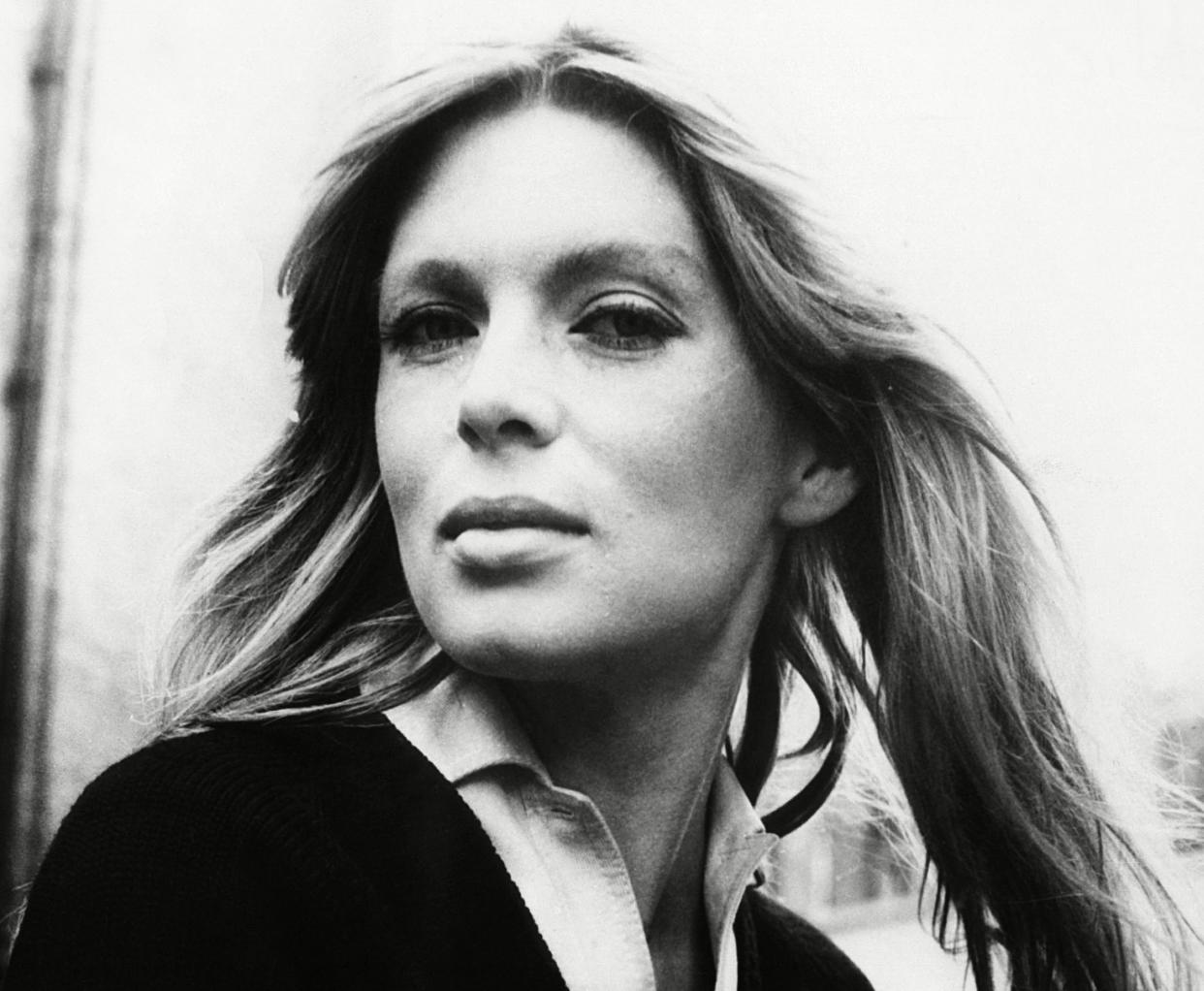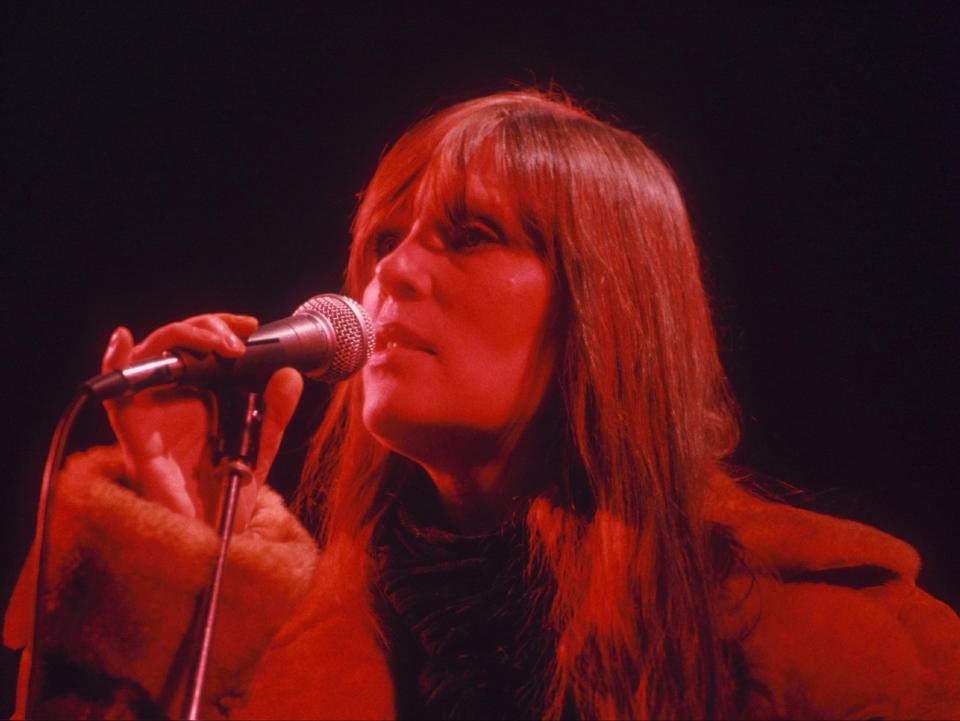She’ll be your mirror: Who was the real Nico?

On 17 July 1988, the German singer-songwriter Nico was in Ibiza suffering from a bad headache. Despite the blistering heat, she decided to cycle into town in search of cannabis, hoping it would relieve the pain, but as she rode she suffered the brain haemorrhage that killed her. In her 49 years, she’d lived many lifetimes. She had been a model for Coco Chanel in the 1950s, acted for Fellini, sung with The Velvet Underground, and become a raw and uncompromising solo artist. Yet when the news reached the papers, their focus was elsewhere. The headline in the Berliner Zeitung read: “Nico: Death of a Star from Berlin Reveals the Secret Love Drama of Alain Delon.”
Even in death, Nico’s story was framed in the context of one of the many famous men who drifted through her life. Delon was far from alone: Bob Dylan, Lou Reed, Jim Morrison and Iggy Pop all fell for the statuesque beauty at one time or another, but her story is not their story. A new biography, You Are Beautiful and You Are Alone, named for a line in her 1970 track “Afraid”, makes clear what a driven, creative and fearlessly original artist she was. “This woman had such an interesting life,” says her biographer, Jennifer Otter Bickerdike. “I set out to write this book because I wanted to know more about her, and because I wanted to know what was actually true and what was myth, because there is so much mythology around her.”
Nico was born Christa Päffgen in Cologne on 16 October 1938, less than a month before the horrific attacks of Kristallnacht marked the escalation of violence against Jews in Nazi Germany. Her father, Wilhelm Päffgen, was recruited into the Wehrmacht and was killed in 1942. Her mother, Grete, worked in a factory making weapons. In her diary, years later, Nico recalled her attempts as a child to give food to the Jews who passed by her home as they were taken by train to Auschwitz. She wrote of the regularity with which she saw dead bodies lying along the sides of roads, and that she “refused to wash with soap made from human bones”.
It is little wonder, then, that Christa Päffgen wished to leave her childhood far behind. “I think she was ashamed her whole life,” says Bickerdike. “She was always trying to outrun her background, and always trying to figure out who she was.” Päffgen started modelling in 1953, at the age of 15. A young fashion photographer she worked with, Herbert Tobias, recommended she change her name to something more “international”. He suggested “Nico”, after a man he’d once loved in Paris, and she went by that name for the rest of her life. “I asked over 100 people who knew her if she ever said, ‘Call me Christa,’” says Bickerdike. “They all said no. It was always Nico.”
Nico’s beauty became her ticket out of Germany, a fact she felt conflicted about. She modelled for Vogue and Chanel in Paris, but resented her worth being reduced to her looks. Her break into the world of acting came in 1959 when, while in Rome with friends, she visited the set of Federico Fellini’s celebrity satire La Dolce Vita. Later, she recalled the visionary director’s first words to her: “I have dreamt of you. I recognise your face. You will look wonderful with candlelight. You must be a star in La Dolce Vita.” He wrote her a small but unforgettable role, and when she expressed concern about her lack of screen experience he reassured her by telling her she would be playing a model named Nico, a part with which she was by then already well familiar.
Following her successful appearance in the film, which became a record-breaking box office hit, Nico was cast in Purple Noon, a French adaptation of Patricia Highsmith’s The Talented Mr Ripley. After somehow managing to mix up the dates, Nico missed the start of filming and her part was recast. When she belatedly arrived, she began an affair with the leading man, Alain Delon – considered France’s answer to James Dean – and had a son, Ari. Although Delon has never accepted paternity, Ari was raised for much of his early life by Delon’s parents.
Nico continued to act and began singing in nightclubs, but it was La Dolce Vita that remained her calling card. Bob Dylan recognised Nico from the film when they met by chance in Paris in 1964, and she invited him to her apartment, where he stayed for “an evening and a week”. The pair holidayed together in Greece, where Dylan babysat Ari while she modelled. He also wrote most of his fourth record there, Another Side of Bob Dylan, as well as a song for Nico to sing called “I’ll Keep It With Mine”, which she said was “about me and my little baby”.
The following year, in May 1965, Nico introduced herself to Andy Warhol at the Parisian nightclub Castel. He too recognised her from La Dolce Vita and invited her to come and visit him at the Factory in New York. That autumn, Warhol announced he was leaving painting behind to focus on other projects, such as music. He was intrigued by an upstart New York band called The Velvet Underground, but found their singer Lou Reed lacking as a frontman. He offered to sign the group, but only if they agreed to work with Nico. Thus began an uneasy professional relationship.

“I really feel like there was a mass communication breakdown there,” says Bickerdike. “Nico thought: ‘This is my band, they’re backing me up.’ To be fair to her, all the advertisements of that time are written: ‘Nico + Velvet Underground’, or even just ‘Nico + band’. She was always the one being interviewed, so you can see how she would feel that way. Meanwhile, The Velvet Underground obviously wanted the Warhol stamp of approval, they wanted the space and the equipment, and they just saw Nico as something they had to deal with to get that.”
The tension between the group and their new chanteuse didn’t stop Reed and Nico from falling for each other. While staying at Nico’s apartment in Greenwich Village, Reed wrote “I’ll Be Your Mirror” for her – the title a sentiment she had once uttered to him. It became one of just three songs Reed allowed her to sing lead on for their 1967 debut record, The Velvet Underground & Nico, along with “Femme Fatale” and “All Tomorrow’s Parties”. Although the record was initially a flop, it has gone on to be regarded as one of the greatest albums ever made, with Nico’s breathy, melancholy vocals now seen as an integral part of its hugely influential sound.
That same year, Nico released her debut solo album, Chelsea Girl. Its title is a reference to Chelsea Girls, an experimental Warhol film in which she had starred in 1966. Making her own record gave Nico the opportunity to record the song Dylan had written for her, as well as tracks by Reed and his Velvet Underground bandmate John Cale. She also included three songs written by a then 18-year-old Jackson Browne, with whom she began a romance. Among the Browne songs she recorded was “These Days”, which may now be her most well-known solo track, thanks in part to a memorable inclusion in Wes Anderson’s The Royal Tenenbaums. Nico, however, disliked the album’s chamber-folk production. “The first time I heard the album, I cried,” she said later, “and it was all because of the flute.”
At this point, already two albums into her musical career, Nico was not yet a songwriter. That changed in 1967 after she met and began a relationship with The Doors’ frontman Jim Morrison. Although their time together was tempestuous, it emboldened Nico to see herself as a creative artist in her own right. At Morrison’s encouragement she bought a harmonium so that she could write music and, importantly, accompany herself when she performed, so she was no longer shackled to backing guitarists. The first song she ever wrote, “Lawns of Dawns”, was inspired by a drug-fuelled all-night bender with Morrison in the Hollywood Hills. “I think Morrison was one of the few people that she could really open up and be herself around,” says Bickerdike. “She said at one point: ‘I hadn’t even thought that I could be an artist.’ The unlocking of that potential is so precious and so important. I’d say that probably other than Delon, that was the most important relationship she ever had because of what it empowered her to do.”
The result of that empowerment can be heard to startling effect on the trilogy of albums that followed. 1968’s The Marble Index, 1970’s Desertshore and 1974’s The End…, all of which were produced and arranged by John Cale, marked a radical departure from the sound of Chelsea Girl. Out went folky instrumentation and in came a dark, gothic sound built around Nico’s droning harmonium and mournful vocals. “It’s like alien music,” says Bickerdike. “There’s nothing like it. There’s nothing that sounds like it before and there’s nothing that sounds like it after.”
It was with these strange and often disquieting albums that Nico established herself without question as a significant artist and songwriter in her own right. While the records were avant garde and almost purposefully uncommercial, they were also inspirational, particularly on the Eighties goth and indie scenes. Morrissey and Siouxsie Sioux are among those who’ve raved about the albums, while Bauhaus’s Peter Murphy once remarked: “Nico was Mary Shelley Gothic; everyone else was Hammer Horror movie Gothic.”

In 1981, Nico played a show in Manchester and afterwards confessed to promoter Alan Wise that she had nowhere to go. He gave her a place to stay, beginning a seven-year period in which she lived predominantly in the city. While she was by now living with a serious heroin addiction, Wise’s stewardship helped her return to touring and recording. “To me, Manchester is the most interesting part of the book,” says Bickerdike. “You get a glimpse at who she could have been if she’d had management, if she’d had friends, if she’d had people who were around her for the person she was and not the persona she was.”
Even after years of research and hundreds of interviews with those who knew her subject, Bickerdike says she eventually came to accept the fact that to some degree the elusive, enigmatic figure at the centre of her book would remain unknowable. “Nobody will ever know the real Nico, and that’s the honest truth of the situation,” she says. “She wasn’t a big talker, even to her friends, and her diary is a pure stream of consciousness. What I tried to do is to present as close to a whole picture as I could of the human underneath the iconised mythology.”
You Are Beautiful and You Are Alone is an entertainingly written and insightful biography, which portrays Nico as a flawed but deeply compelling individual. While her life’s work has often been obscured by the long shadows cast by her famous lovers, Nico’s story is one of deep resilience and tenacity. From her very earliest years she was confronted with humanity at its darkest, and she channelled all of that rage and anguish into music that remains among the most raw and visceral ever recorded. She died a true artist, one who stared into the depths of her tortured soul and reflected it back at her audience with all the startling clarity of a mirror.
‘You Are Beautiful and You Are Alone: The Biography of Nico’ is out on 15 July
Read More
Rap beefs, gang fights and dirty cops: who really killed Tupac and Biggie?
Laura Mvula: ‘Black female artists? You’re at the bottom of the food chain’

 Yahoo News
Yahoo News 